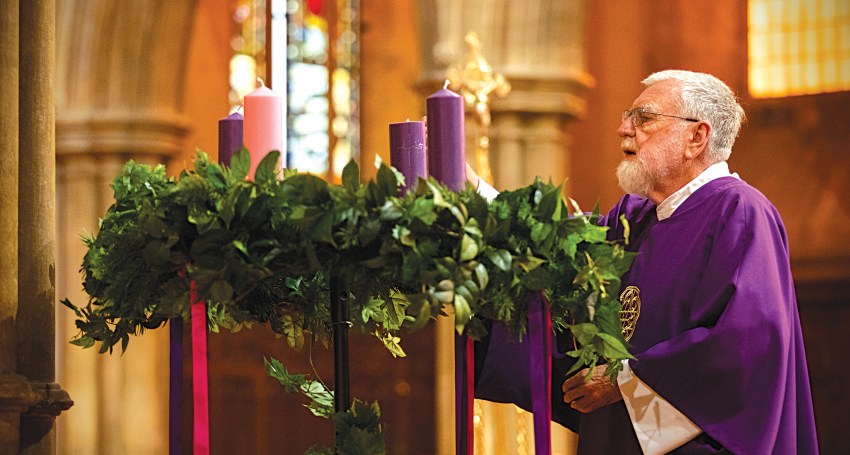Unfolding the mystery of Christ
Opinion
The purpose of any calendar is to help people within a given society to order their lives. Most modern countries use the Gregorian calendar, but in actual fact there are about 40 different calendars in use around the world today, particularly for determining religious dates. The Church’s Liturgical Calendar is one of these and is not so much concerned with ‘counting days’ but in setting out guidelines for the celebration of the mystery of Christ over the period of a year.

The Liturgical Year is based on the fact that Sunday is the primary day when Christians gather to celebrate the death and resurrection of Christ, with Easter as the most important Sunday of the year. And while Christmas does not necessarily fall on a Sunday, the birth of Christ is the other major feast around which the Church’s year is structured.
The Second Vatican Council sought to have the Liturgical Calendar revised so as to highlight the sacred seasons of the Church which had been obscured by the prevalence of saints’ feast days. Both Easter and Christmas are celebrated over more than one day; Easter lasts for 50 days, and Christmas for approximately 20 (until the feast of the Baptism of the Lord). They are also preceded by several weeks of preparation: Lent (with a focus on baptismal and penitential themes) lasts for 40 days and Advent (characterised by joyful expectation without penitential overtones) for four weeks. For these feasts and seasons, the readings and prayers ‘proper’ to the day are used, so that the faithful can remember and reflect on the extraordinary love of God that has been poured out on us in the person of Christ who has drawn us forever into that love through his life, death and resurrection.
Advertisement
The remainder of the year has the designation ‘Ordinary Time’. This does not mean that it is not important, but that there are 34 ‘ordered’ weeks devoted to the mystery of Christ in all its aspects, in which Christians deepen their knowledge and understanding of Christ and allow the word of God to take root in their hearts so that their lives conform more and more to that of Christ. Because the Sundays of Ordinary Time complement the ‘extraordinary’ feasts of Christmas and Easter they occur in two sections: a period of up to eight weeks beginning with the Baptism of Christ until Ash Wednesday, and a longer period of around 25 weeks from the feast of Pentecost until the Saturday following the feast of Christ the King.
How do Mary and the saints fit into the Church’s Liturgical Calendar? Only the major Marian feasts and a limited number of saints are celebrated universally. As the Mother of God and the first disciple, Mary is the model par excellence of Christian living, and the saints through the ages have provided inspiration and encouragement to us to continue to strive to live the best lives we can. However, individual countries can choose to celebrate the feasts of saints who have particular national and local relevance. For example, in Australia, the feast of Mary of the Cross MacKillop is a Solemnity, which means it takes preference over any other possible celebration on that day.
Advertisement
The Church year ends with the feast of Christ the King, with readings and prayers that turn our minds to Christ’s second coming at the end of time. The new Church year begins the next Sunday with the First Sunday of Advent. The passage from one season to another is marked by a change in the colour of vestments: purple for Advent and Lent; white for Christmas and Easter; green for Ordinary time.
The Church’s year is not so much a matter of dates and days, but a process of living out the great mystery of God’s love for us in Christ. As we celebrate the various feasts and seasons let us be open to God’s spirit working within us, enabling the gradual transformation of our lives so that we might both see the face of Christ in others and reflect that to them.
Jenny O’Brien is manager of the Office for Worship.







Comments
Show comments Hide comments